11 amazing facts about the Iditarod
There's even a Jamaican dog sled team

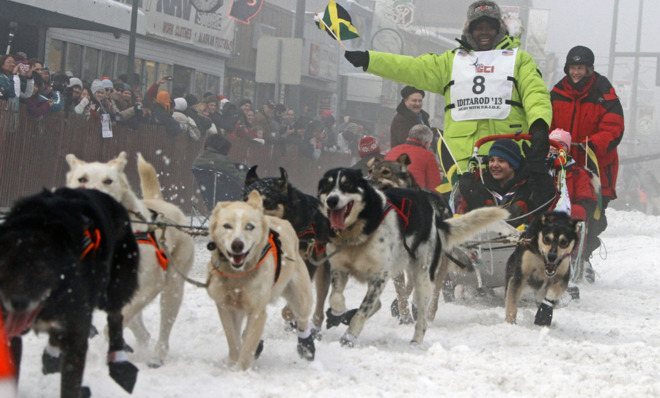
The mushers crossed the finish line early Tuesday in the Iditarod. The annual dog sled race from Anchorage to Nome began on March 2nd, and the winner, Dallas Seavey, crossed the finish line at 4:04 a.m. Alaska time. It was the second win for Seavey. For Aliy Zirkle, who crossed at a 4:06 a.m., it was the third time coming in second place. It was also a hard night for Jeff King, who had a one hour lead until he was blown off course by a blizzard and had to drop out. The Iditarod can be brutal and trying, but it is always exciting. Here are 11 amazing facts about "the last great race on Earth."
1. RACE TIMES HAVE GOTTEN TWICE AS FAST SINCE IT STARTED.
The first Iditarod took place in 1973, and took about 20 days to complete; currently, it takes about 10 days. The winner this year set a new record at eight days, 14 hours, 19 minutes. The last place time was 32 days in the beginning, and now it's about 13 days.
The Week
Escape your echo chamber. Get the facts behind the news, plus analysis from multiple perspectives.

Sign up for The Week's Free Newsletters
From our morning news briefing to a weekly Good News Newsletter, get the best of The Week delivered directly to your inbox.
From our morning news briefing to a weekly Good News Newsletter, get the best of The Week delivered directly to your inbox.
2. SLED DOGS NEED 10-12,000 CALORIES A DAY.
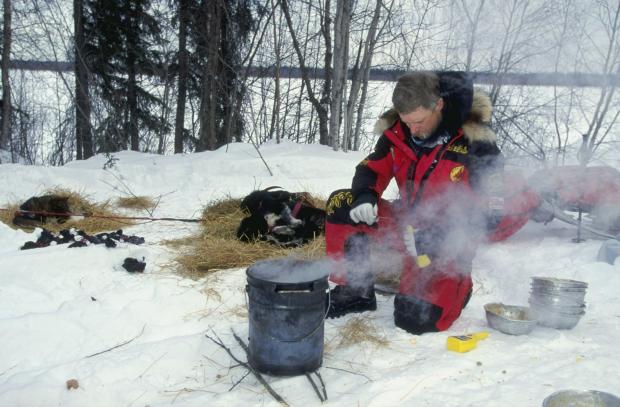
Each sled is pulled by a team of 16 dogs, and they need to keep on eating. On the trail they get frozen snacks like chunks of meat, fish, or soaked dog food. When they stop at checkpoints they get a warm meal, maybe a nice a slurry of beef, Arctic char, vitamin supplements, and kibble mixed with water and chicken fat — cooked in a bucket camp stove that doubles as the driver's seat on the sled.
3. THE DOGS WEAR BOOTIES.
It's cold out there on the trail, but that's not why the dogs have to keep their feet covered. Their fur and efficient circulatory systems keep them warm enough. But the ice, snow, and rocky terrain is hard on their foot pads so they have to be protected. Mushers usually make their dogs' booties themselves, and they are required by the rules of the race to have at least eight extra per dog on the sled.
A free daily email with the biggest news stories of the day – and the best features from TheWeek.com
4. THERE'S A JAMAICAN DOG SLED TEAM.
Inspired by the Olympic Jamaican bobsled team, a Caribbean tour operator started a Jamaican dog sled team to compete in various races. (It was sponsored by Jimmy Buffett.) In 2010, team member Newton Marshall became the first Jamaican to compete in the Iditarod. He now competes independently as Mushin' Mon. He recently made Iditarod news when he helped rescue another musher who had broken his ankle chasing a loose dog. That musher happened to be the subject of our next fact…
5. DOGS CAN BE SAVED WITH MOUTH TO SNOUT RESUSCITATION.
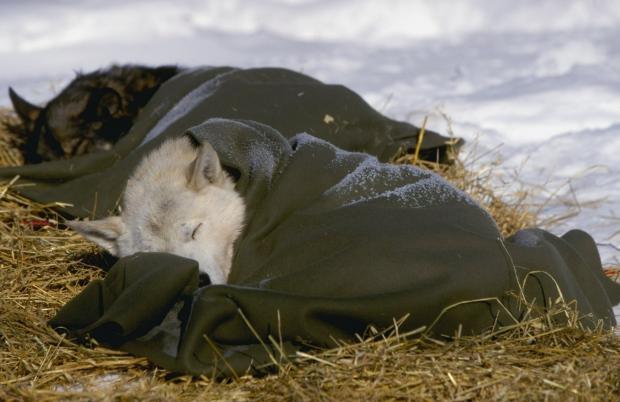
The musher Marshall saved, Scott Janssen, a funeral home proprietor known as the Mushing Mortician, made news in the 2012 Iditarod when he saved one of his dogs who had collapsed on trail by performing mouth to snout resuscitation on him. That husky's name? Marshall. Coincidence? Or mysterious karma of the trail?
6. IT'S A FAMILY AFFAIR.
There's quite a bit of friendly family rivalry in the Iditarod. This year's winner, Dallas Seavey, became the youngest Iditarod winner at 25 on his first win in 2012. In 2013, his father Mitch became the oldest winner at 53. Mitch's father, Dan, had finished third in the 1973 race. Other Iditarod families include Anna and Kristy Berington, twin sisters both competing for the third time this year, and the Mackeys — father Dick and sons Rick and Lance, who each won the race on their sixth attempt, each while wearing number 13.
7. THE FINISH LINE IS A GOOD PLACE TO BECOME A CITIZEN.
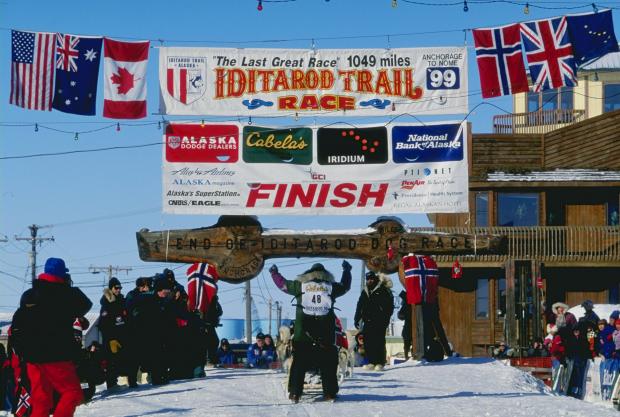
Martin Buser moved to Alaska from his native Switzerland in 1979. He ran his first Iditarod in 1980 and holds the record for finishing the race the most times at 29. He also held the previous record for fastest finish time with his 2002 win. Right after that win, he became a U.S. citizen in a naturalization ceremony held under the monument arch that marks the finish line.
8. SLED DOGS HAVE TO STUDY THEIR VOCABULARY.
Part of sled dog training involves teaching them a set of standard commands.
Hike! (Let's go! Get moving!)Haw! (Turn left!)Gee! (Turn right)On by! (Pass another team! or Pay that distraction no mind!)Easy! (Slow down!)Whoa! (Stop!)
9. THE RACE IS NAMED FOR A GHOST TOWN.
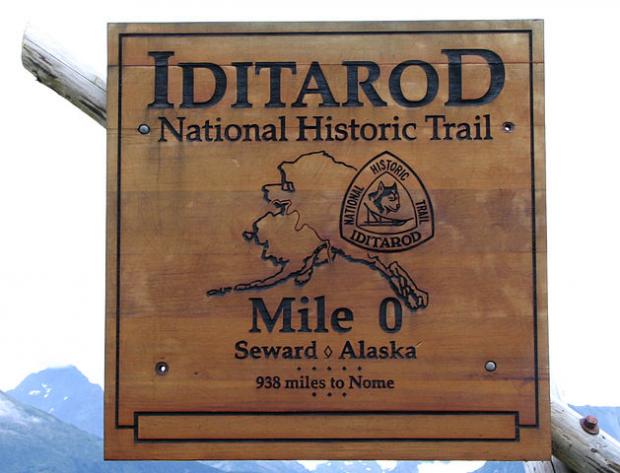
Or at least for the name of the route than once carried mail, supplies, and gold prospectors to the town of Iditarod. The town was named for the Iditarod River and was once flush with action from an early 20th century gold rush. But after the gold ran out in the 1930s, everyone left. All that's left of it is a few abandoned shelters and a rusty old bank vault.
10. THE DISTANCE VARIES.
The race course is about 1000 miles, but it can vary depending on snow, ice, and other terrain conditions. Also, the race alternates between a northern course and a southern course every year. This way, more of the small towns in the middle of the state get to participate in the action and benefit from a bump in visitors.
11. THE LAST PLACE FINISHER GETS A SPECIAL PRIZE.
It's a race tradition to light a lantern at the finish line in Nome when the race begins and leave it lit as long as there are still mushers out there on the trail. It's a nod to the old custom of the "widow's lamp" which was a safety measure to keep track of when sled drivers were out on the trail and whether they had reached their destination or not. Some sled races started handing out lanterns to the last place finisher as a joke, but now the "red lantern" is an official prize to bear proudly. When it comes to the Iditarod — 1000 miles of snow, ice, frostbite, sleeplessness, danger, and mud — just finishing is no small achievement.
Follow the action at Iditarod.com.
Arika Okrent is editor-at-large at TheWeek.com and a frequent contributor to Mental Floss. She is the author of In the Land of Invented Languages, a history of the attempt to build a better language. She holds a doctorate in linguistics and a first-level certification in Klingon. Follow her on Twitter.
-
 Ski town strikers fight rising cost of living
Ski town strikers fight rising cost of livingThe Explainer Telluride is the latest ski resort experiencing an instructor strike
-
 ‘Space is one of the few areas of bipartisan agreement in Washington’
‘Space is one of the few areas of bipartisan agreement in Washington’Instant Opinion Opinion, comment and editorials of the day
-
 How robust is the rule of law in the US?
How robust is the rule of law in the US?In the Spotlight John Roberts says the Constitution is ‘unshaken,’ but tensions loom at the Supreme Court
